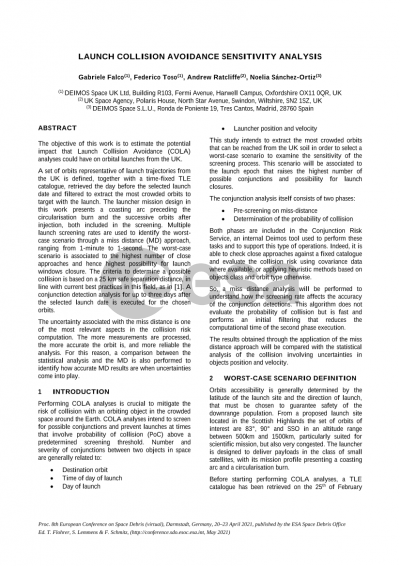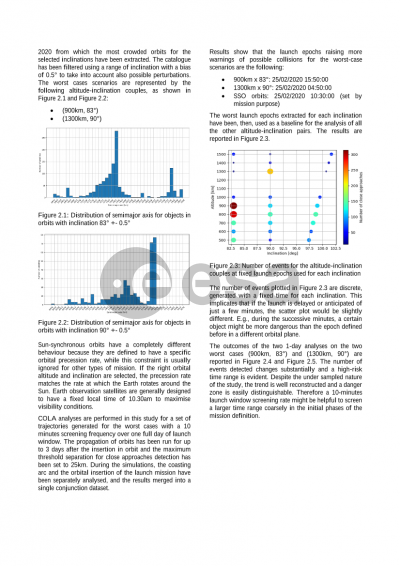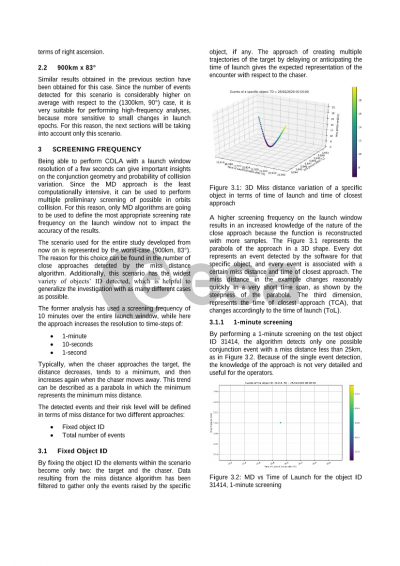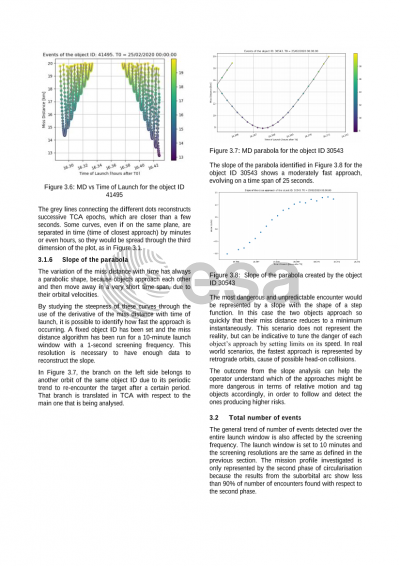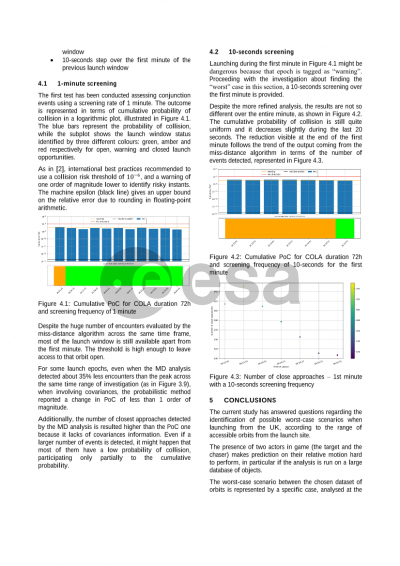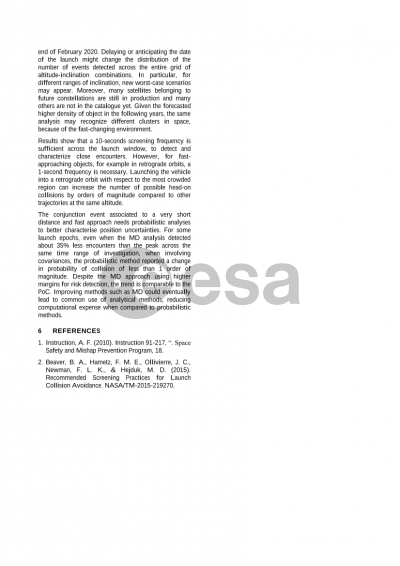Document details
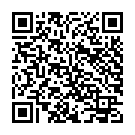
Abstract
Performing collision avoidance on launch assessment (COLA) is crucial to mitigate the risk of collision with an orbiting object in the crowded space around the Earth. A launch vehicle has to traverse crowded regions around the Earth to reach its prescribed orbit, threatening the already unstable space environment. The risk can change very quickly depending on launch date because of position uncertainties and high speed of on-orbit objects. Moreover, the non-uniform distribution of objects in space presents varying probabilities of close encounter events.
Orbits accessibility is determined by the latitude of the launch site and the direction of launch, which must be chosen to guarantee safety of the downrange population. Within the range of accessible orbits from the UK there are sun-synchronous, polar and near-polar orbits, that are very attractive slots for scientific missions, but also very congested. The density of the chosen orbit, the definition of the launch epoch and the screening criteria influence launch window closures.
A set of orbits representative of launch trajectories from the UK was defined, together with a time-fixed TLE catalogue, retrieved the day before the selected launch date and filtered to extract the most crowded orbits. The launcher mission design in this work presents a coasting arc preceding the circularisation burn and the successive orbits, both included in the screening. Multiple launch screening rates were used to identify the worst-case scenario through a miss distance (MD) approach, ranging from 1-minute to 1-second. Here, the worst-case scenario is associated to the highest number of close approaches and hence highest possibility for launch windows closure. The criteria to determine a possible collision was based on a 25 km safe separation distance, in line with current best practices in this field. MD analyses were run to screen for possible in orbit collisions or close approaches between the target (launcher) and the chaser (object). A conjunction detection analysis for up to three days after the selected launch date was executed for the chosen orbits.
Results show that a 10-second screening frequency is sufficient across the launch window, to detect and characterize close encounters. However, for fast-approaching objects, in retrograde orbits with respect to the target, a 1-second frequency is necessary. Launching the vehicle into a retrograde orbit with respect to the most crowded region can increase the possible head-on collisions by approximately 10 times, with respect to other trajectories at the same altitude. The conjunction event associated to a very short distance and fast approach needs probabilistic analyses to better characterise position uncertainties. For some launch epochs, even when the MD analysis detected about 35% less encounters than the peak across the same time range of investigation, when involving covariances, the probabilistic method reported a change in probability of collision (PoC) of less than 1 order of magnitude. Despite the MD approach using higher margins, the trend is comparable to the PoC. Improving methods such as MD could eventually lead to common use of analytical methods; reducing computational expense when compared to probabilistic methods.
Preview
